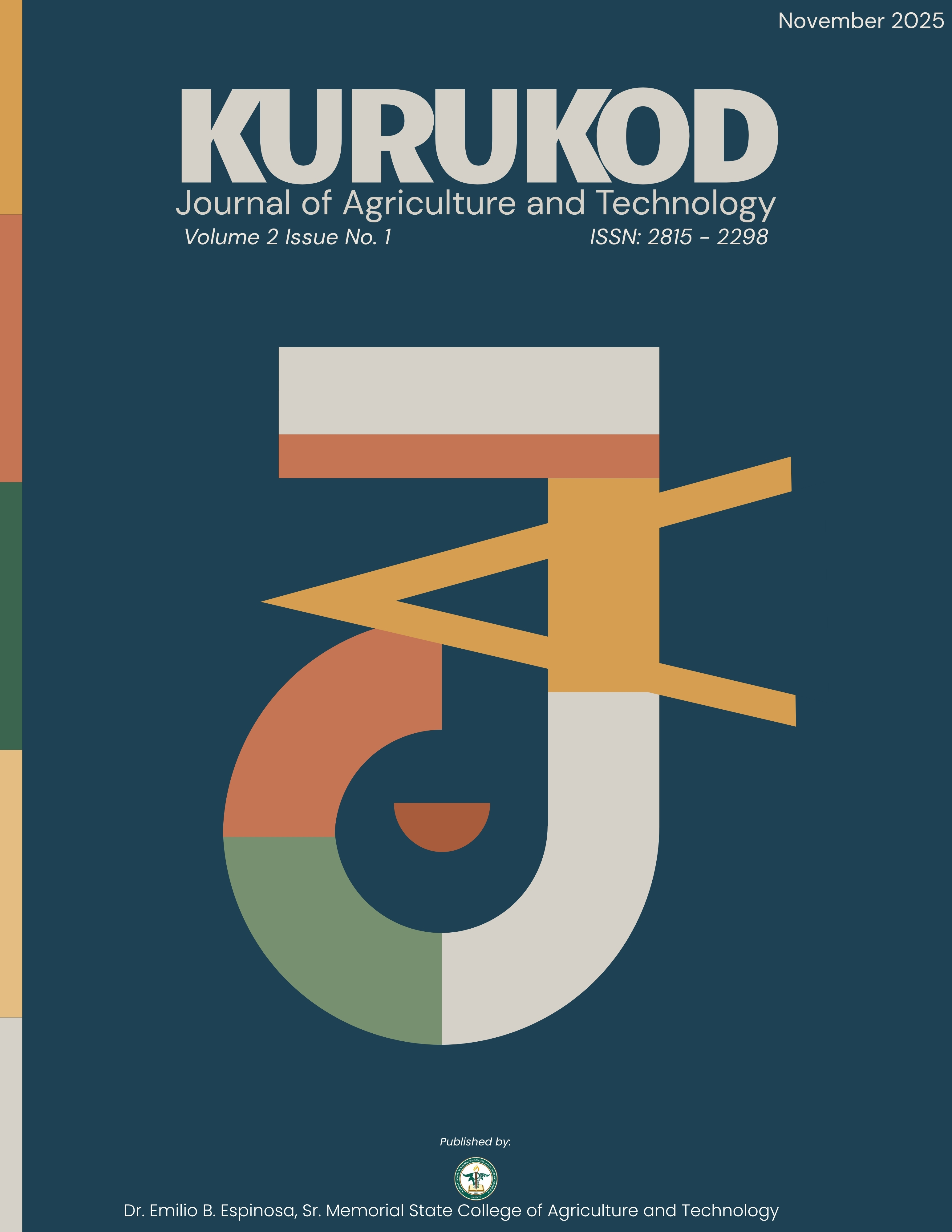Survivability and Growth Performance of Abaca (Musa textilis Née) using Biofertilizers in Masbate, Philippines Condition
DOI:
https://doi.org/10.63798/kjat.v2i1/sAgpOamTnUbImpcKeywords:
abaca, biofertilizer, growth, Masbate condition, survival rateAbstract
The study was conducted to evaluate the effects of biofertilizers on the survivability and growth performance of abaca under Masbate conditions. A trial was carried out following a Randomized Complete Block Design (RCBD) with four treatments and four replications. The effects of different fertilizers, applied at their recommended rates, served as treatments, namely: Treatment A – 10 g of complete fertilizer per plant (Control); Treatment B – 10 g of complete fertilizer per hill combined with a foliar application of 15 mL of ANAA per 4 L of water; Treatment C – 20 g of Mykovam per plant; and Treatment D – 20 g of Mykoplus per plant. Abaca plants were monitored under field conditions for three months, and soil chemical properties were analyzed before and after treatment application. Growth parameters—including height increment, leaf development, pseudostem size, sucker production, and survival rate—showed no significant differences (p > 0.05) among treatments. These findings suggest that biofertilizers such as Mykovam and Mykoplus remain practical alternatives when inorganic fertilizers are limited, as their beneficial microbes help support nutrient uptake and root development. The consistently high survival rate across treatments also indicates that Masbate provides favorable conditions for establishing abaca. Further research should extend into later growth stages, focusing on fiber yield and quality, and evaluating whether combined or reduced fertilizer rates with biofertilizers can provide long-term benefits for plant performance and soil health.
Downloads
Downloads
Published
Issue
Section
License
Copyright (c) 2025 Joyce S. Atacador (Author)

This work is licensed under a Creative Commons Attribution-NonCommercial-NoDerivatives 4.0 International License.


